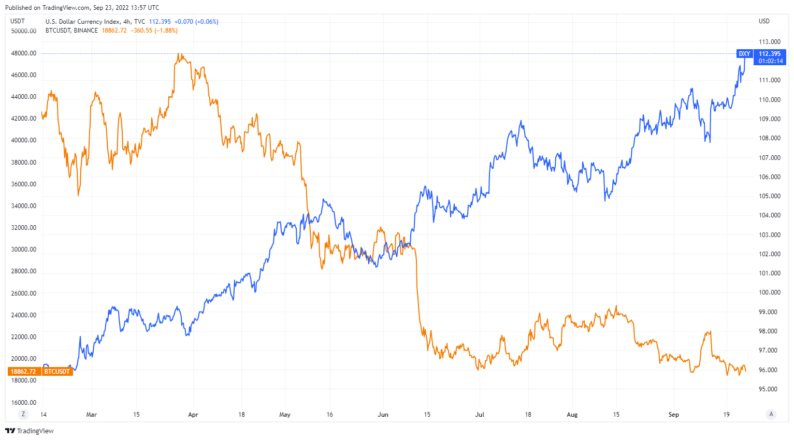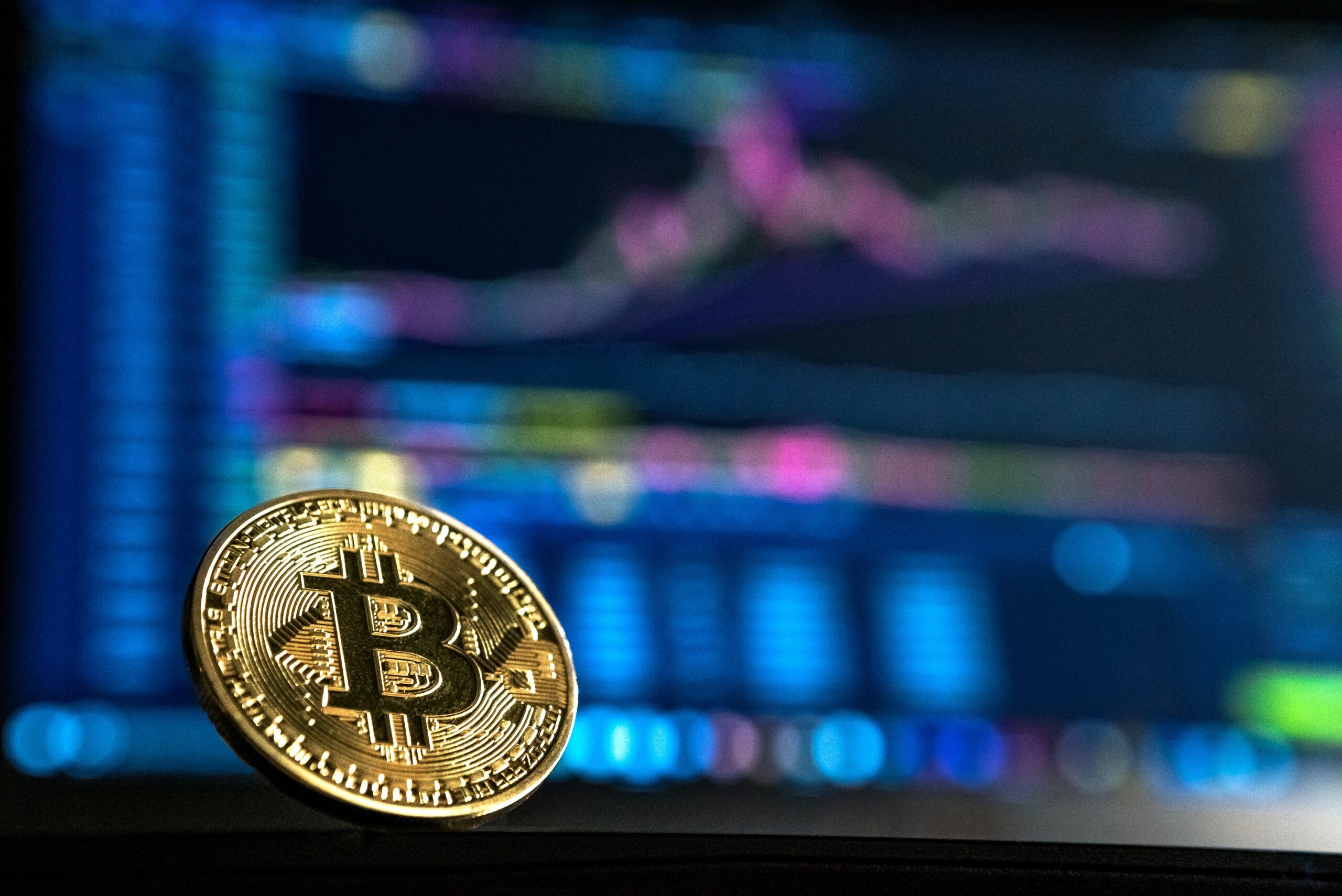Bitcoin struggles as dollar hits 20-year high

Important takeaways
- The dollar index has jumped to 20-year highs above 112 thanks to the Federal Reserve’s economic tightening policy.
- As the dollar soars, Bitcoin and other cryptocurrencies struggle due to the Fed’s rate hikes.
- While the dollar is currently rising against other currencies, a slowdown in inflation or an end to the European energy crisis could revive interest in risk assets.
Share this article
Bitcoin and the broader crypto market are struggling to hold above their June lows due to renewed strength from the dollar.
Bitcoin down as dollar rallies
Bitcoin is fighting the dollar – and it’s losing.
The dollar index (DXY), a financial instrument that measures the price of the US dollar against a basket of other currencies, hit a new 20-year high on Friday, sending other world currencies and risk assets lower. The DXY, which measures the value of the dollar against a basket of other currencies, topped 112 earlier this morning. It is trading at around 112.8 at press time, per TradingView data.
The crypto market has been particularly hard hit in recent weeks due to the renewed strength of the dollar. In August, Bitcoin briefly rallied to $25,200 as the dollar pulled back from July highs. Since then, however, crypto assets have been crushed under the weight of the rising dollar. Bitcoin now appears to be below $20,000 as the dollar continues to climb, trading at around $18,810 at press time, per CoinGecko data.

Much of the dollar’s positive price action can be traced back to rising interest rates from the Federal Reserve. As the Fed raises interest rates to fight inflation, it tightens the liquidity of the US dollar. This should help bring inflation back down by making it more expensive to borrow money, thereby reducing demand. However, a side effect of such a regime is that it makes the dollar a much more attractive investment.
The tightening of dollar liquidity means that market participants have less money to invest in riskier assets such as cryptocurrencies and stocks. In turn, this reduces demand, causing asset prices to fall. The Federal Reserve has also stopped buying US Treasuries as part of its tightening policy. This has caused the interest rate on US bonds to rise, which helps the value of the dollar increase as more investors buy these bonds.
Dollar Milkshake Theory
It’s not just crypto and stocks that suffer from a skyrocketing US dollar. As the Fed began raising interest rates to fight inflation before other nations and has been increasingly aggressive in the size of its increases, liquidity from the global economy is flowing into the US dollar at a record pace.
This effect was coined the “Dollar Milkshake Theory” by Santiago Capital CEO Brent Johnson. It suggests that the dollar will soak up liquidity from other currencies and countries around the world whenever the Fed stops printing because of its place as the world’s reserve currency.
Since the US Reserve Bank turned off the money printer and began tightening liquidity in March, the Dollar Milkshake Theory appears to be playing out. The euro, the currency gaining the most weight against the dollar in the DXY, has plunged through 2022, recently hitting a new 20-year low of 0.9780 against the dollar.
Other world currencies are not faring much better. The Japanese yen fell to a 24-year low on Thursday, prompting government intervention to prop up the currency. While the European Central Bank has reacted to the weakening euro by raising interest rates, the Bank of Japan has so far refused to do so. This is because it is actively engaged in Yield Curve Control, keeping interest rates at -0.1% while buying an unlimited number of 10-year Treasuries to keep yields at a target of 0.25%.
As things stand, it looks increasingly difficult for assets like cryptocurrencies to find strength amid a deteriorating global economy. However, there are several signs that investors can look for that could indicate an end to the dollar’s dominance and its ripple effects. If next month’s CPI data registers a notable drop, investors may turn to riskier assets in the hope that the Fed will moderate its interest rate hikes. Elsewhere, a resolution of the current Russian-Ukrainian war could help alleviate the global energy crisis by reducing the cost of oil and gas. Still, for now the dollar’s rally shows no signs of abating – and that could keep crypto trapped near its yearly lows.
Disclosure: At the time of writing this piece, the author owned ETH, BTC and several other cryptocurrencies.
























